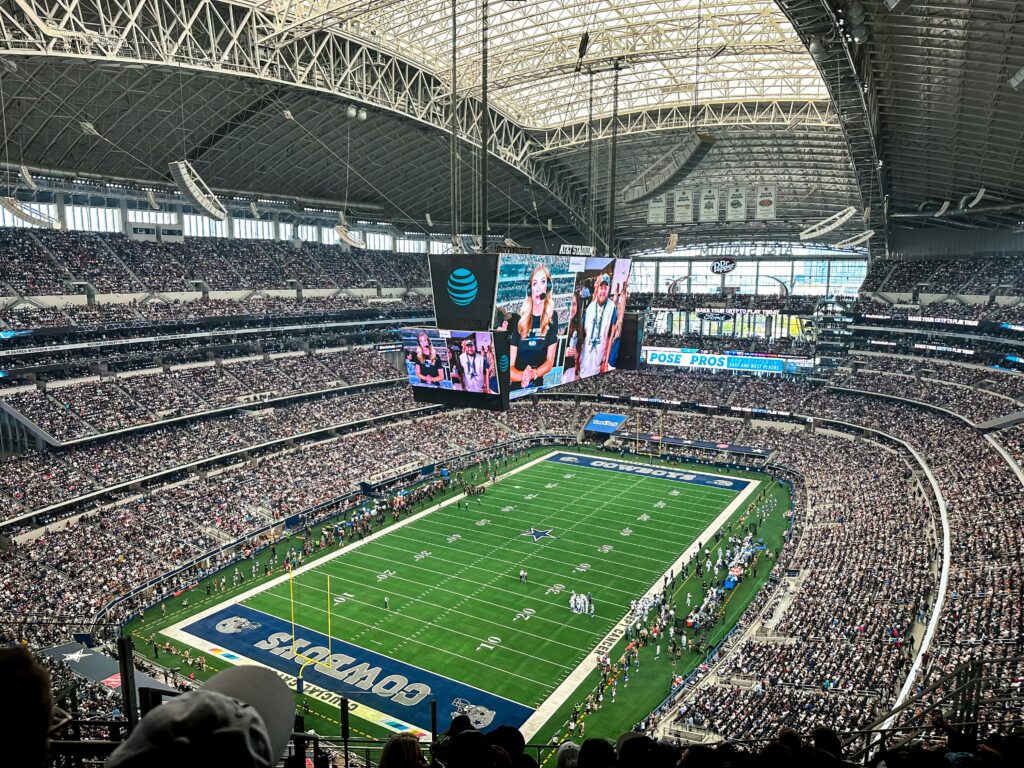The National Football League (NFL) has spent decades trying to take its uniquely American sport to an international stage. What once seemed like an ambitious experiment has now evolved into a well-structured global campaign. With regular-season games being held in London, Germany, and soon other parts of the world, the NFL is testing how far its brand can travel and whether it can truly become a global league.
The Strategy Used for Expansion
For many years, the league’s reach stopped at just the United States and Canada. However, the NFL’s leadership has recognized that international markets present enormous growth potential. The goal is not just to stage games overseas but to establish a year-round presence in regions where interest is steadily increasing. This involves building fan bases, encouraging youth participation, and forming media partnerships to make the sport a part of the local conversation.
The NFL’s International Series began in 2007, when the New York Giants faced the Miami Dolphins at Wembley Stadium. That single event marked a turning point. Since then, the UK has hosted dozens of games, with sold-out crowds and growing television audiences. The success of the London games led the league to explore other regions, eventually expanding into Germany, which has quickly proven to be one of the most passionate international markets. Stadiums in Munich and Frankfurt have seen high demand for tickets, suggesting that the appetite for American football extends far beyond curiosity.
The NFL’s Appeal Abroad
What makes the NFL attractive to global audiences is its spectacle compared to other sports. The combination of athleticism, strategy, and pageantry sets it apart. Fans are drawn to the high production value, the tactical complexity, and the drama that unfolds each Sunday. While the rules may be complicated for newcomers, the league has invested heavily in international broadcasting and educational content to make the game more accessible. Streaming platforms and social media have played a huge role in this effort, allowing fans from around the world to follow their favorite players and teams in real time.
Germany’s quick embrace of the sport is partly rooted in its own football heritage. The country had a strong following during the NFL Europe era, which ran from 1991 to 2007. Many fans who supported teams like the Frankfurt Galaxy and Berlin Thunder are now watching the modern NFL with a sense of nostalgia and renewed enthusiasm. The league’s recent expansion efforts have reignited that interest and given fans the chance to experience the highest level of play live. This mirrors, in some ways, the appeal of classic entertainment forms like the 88 Fortunes slot, where familiar visuals and recurring themes maintain user interest – though here, the focus is on athletic performance rather than on-screen play.
The Challenges of Taking Football Global
Despite the enthusiasm, several obstacles stand in the way of full-scale global success. American football is logistically very demanding. It requires large rosters, specialized equipment, and significant infrastructure that no other sport can match. Transporting teams, staff, and gear across continents is costly and time-consuming. The league must also manage the competitive balance that comes with shifting games overseas. Teams giving up home-field advantage face potential disadvantages during long travel weeks, a factor that remains a point of debate among players and coaches.
Cultural differences present another challenge. In regions where soccer dominates, American football must compete for attention and audience share. Establishing deep fan loyalty takes time, and casual interest does not always translate into long-term commitment. The NFL’s approach has been to build slowly, focusing on markets where organic interest already exists rather than forcing entry into regions with limited awareness.
The Role of Modern Technology and Media
Digital media has been one of the league’s most powerful tools in connecting with global audiences. Streaming services such as NFL Game Pass and partnerships with broadcasters like Sky Sports have made it easier for fans to watch live games, highlights, and documentaries. The NFL has also embraced social platforms to personalize its content, sharing player stories and behind-the-scenes access to engage new audiences.
Interactive technology is also reshaping how fans engage. From virtual reality training simulations to mobile fantasy leagues, the NFL has leveraged digital innovation to keep fans invested year-round. For younger audiences, this interactivity helps bridge the gap between being a casual viewer and a dedicated supporter.
What the Future Holds
The league’s next phase of expansion may involve more than occasional games abroad. Long-term discussions have hinted at the possibility of an international franchise, possibly based in London or another European city. While there are no concrete plans yet, the idea remains an ongoing conversation. Establishing a permanent team overseas would mark a major milestone but would require solving complex logistical, financial, and regulatory challenges.
The NFL is also exploring Latin America and Asia as potential growth regions. Mexico has already hosted several successful games, and countries such as Brazil and Japan have shown increasing interest in American football. Each new territory offers unique opportunities, but the league appears cautious, emphasizing sustainable development over short-term gains.




